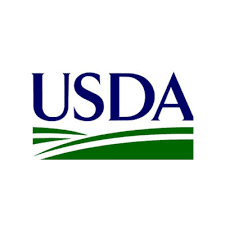
USDA Office of Communications
(Washington, D.C., January 9, 2020) – Today, in recognition of January 2020 as National Biotechnology Month, the U.S. Department of Agriculture (USDA), the Food and Drug Administration (FDA), and the Environmental Protection Agency (EPA) launched a Unified Website for Biotechnology Regulation. The Website streamlines information about the three regulatory agencies charged with overseeing agriculture biotechnology products and is part President Donald J. Trump’s Executive Order on Modernizing the Regulatory Framework for Agricultural Biotechnology Products.
“Agricultural biotechnology has been and will continue to be an essential tool in helping America’s farmers and ranchers feed, fuel, and clothe the world,” said U.S. Secretary of Agriculture Sonny Perdue. “From producers to consumers, all Americans deserve a government that delivers science-based, common-sense regulations that foster innovation, conserve resources, and protect public health—especially when it comes to the food supply. The launch of this unified Biotechnology Regulation website is proof of President Trump’s commitment to provide the American people with sensible regulations in a clear and transparent manner.”
“EPA is pleased to be working with our partners at USDA, FDA, and across the federal government to implement President Trump’s Executive Order and launch this new, coordinated website,” said EPA Administrator Wheeler. “This new website will help provide regulatory certainty and clarity to our nation’s farmers and producers by bringing together information on the full suite of actions the Trump Administration is taking to safely reduce unnecessary regulations and breakdown barriers for these biotechnology products in the marketplace.”
“This is a time of unprecedented scientific innovation. Agricultural biotechnology promises to bring dynamic new products to the marketplace,” said FDA Commissioner Stephen Hahn, M.D. “At the FDA, we are committed to fostering flexible, risk-based approaches in this field while upholding our mission of protecting and promoting both human and animal health and animal well-being, for example by reducing their susceptibility to diseases like novel influenzas and resistance to zoonotic or foreign animal diseases. Our approach balances our internationally respected, science-based review standards with our ongoing risk-based regulatory approaches to ensure the safety of our food supply.”
